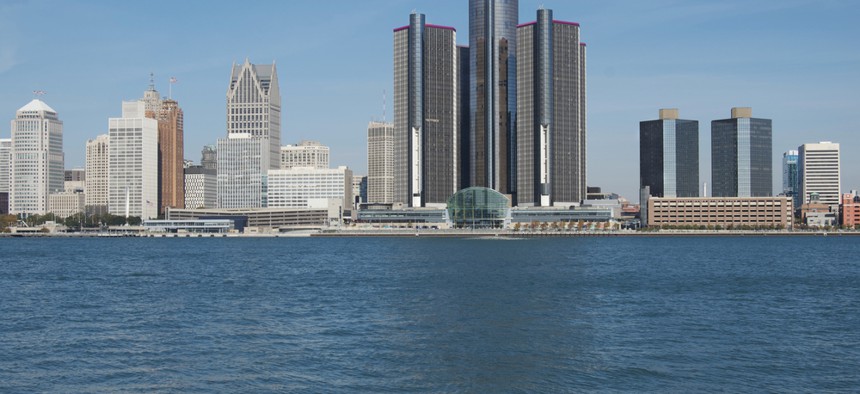Power Grid Failure Leaves Detroit Government Buildings in the Dark. Again.

Linda Parton / Shutterstock.com

Connecting state and local government leaders
The Motor City is in the middle of a multi-year transition to shift control of its municipal grid to the regional power utility.
When the power suddenly goes out in Detroit, it turns out the problem is actually part of a long-term solution to infrastructure woes that have plagued the Motor City for decades.
More than 900 sites in Michigan’s largest city, including fire stations, hospitals and schools, were left without power Tuesday morning after a failure in the city’s municipal grid left public officials and some residents in the dark for several hours.
The effects were reportedly far reaching, affecting everything from traffic lights to courtrooms and even the Wayne County Jail.
The Detroit Press Office issued a statement describing the event as a “major cable failure” that began at around 10:30 a.m.:
The outage is affecting all customers on the PLD grid. We have isolated the issue and are working to restore power as soon as possible. The city's Public Lighting Department is working closely with DTE during this process."
According to Mayor Mike Duggan, the outage affected 740 traffic signals, 36 fire stations and 81 public schools across the city. However, he stressed that the outage did not affect 911 services and that city’s fire department personnel were actively involved in emergency response efforts.
Today is a good reminder of how much work we still have to do says Mayor Duggan. #DetroitPowerOutage
— Mayor Mike Duggan (@MayorMikeDuggan) December 2, 2014As city officials and residents scrambled to deal with the situation, most reports focused on the immediate issues like incidents of people trapped in elevators and elderly residents who needed assistance in evacuating buildings including the Coleman A. Young Municipal Center.
While the news was startling, representatives for impacted buildings such as the Detroit Medical Center’s Detroit Receiving Hospital and the Wayne County Jail said local generators restored power immediately after the power grid failure.
"DRH leadership emphasized the fact that all patients are safe and being well-cared for. All emergency power systems are working effectively,” spokeswoman Sarah Collica said in a statement.
As power slowly returned throughout the afternoon, it became clear that the crisis is in fact part of a larger issue affecting Detroit’s power grid.
The news might sound familiar to city workers and residents who were hit by similar major outage just over a year ago. The September 2013 outage came on the heels of an announcement that the city’s Public Lighting Department (PLD) was being phased out as part of a multi-year transition to DTE Energy, the regional power utility.
Duggan noted that the shift to DTE Energy is part of a four-year process leaving the city and many of its residents in a holding pattern.
"Poor infrastructure is completely at fault for this," Duggan said, according to MLive.com, pointing out that decades of neglect have left the city’s power grid in a vulnerable position.
Dugan stressed the need for patience in the wake of the major power outage. "Every month that goes by, we will be more and more on a more-modern system and the likelihood of this happening will go down, but it's part of rebuilding the city," he said.
It may be cold comfort to city workers on a day like Tuesday but Detroit has been hitting some significant milestones in its ongoing effort to reverse decades of neglect cited by Duggan.
For example, the PLD has been using LED lighting technology to restore streetlights across the city, literally moving one ZIP code at a time to relight the city.
A 2008 Department of Justice study found some evidence that cities that increased lighting in public spaces saw a measurable decrease in crime. More than 10,000 of the new LED lights have already been installed in Detroit, with the plan calling for more than 65,000 new lights to be in place by the end of 2016.
(Top image by Linda Parton / Shutterstock.com)




